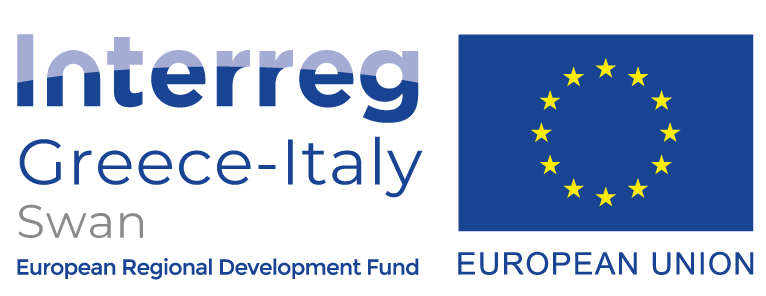The Municipality of Nardò is one of the public partners of the Sustainable Water Aerodrome Network (SWAN) project, the first among those engaged to have completed the construction of the ‘waterway’ infrastructure: on July 22, 2022, in a ribbon-cutting ceremony, the Mayor of the town Pippi Mellone unveiled the Santa Maria al Bagno terminal, where seaplanes of the transport service will be able to take off from, starting in 2024, when the other partners in the network – in particular Taranto and the Diapontine Islands – will also be ready with their own infrastructure to provide the service and to make this innovative transport network ‘take off’ (literally) with services to users.
The Nardò infrastructure comes 4 years after the inception of the SWAN project, which has gone through slowdowns due to the pandemic but also bureaucratic difficulties resulting from the actual complexity of the project, requiring major work to harmonize the laws and regulations of the two partner countries (Italy and Greece), as well as various authorities affected by the type of activity, from harbor authorities to aviation. The infrastructure consists of the availability of a stretch of water suitable for seaplane flight operations and a landfall facility, a mini-terminal with a welcome area and info-point for passenger reception and information services, offices, first aid, and toilets. A structure the latter with a very small impact on the environment (removable, eco-friendly artifacts were used and installed without concrete).
Councilor for Tourism and Territorial Marketing Giuseppe Alemanno told us how and why the Municipality of Nardò joined this European cooperation project.
Councilor Alemanno, when did the collaboration of the City of Nardò for the SWAN project start?
The Swan project was one of the first European projects (though not the only one) which the Mellone administration, in charge since 2016, focused its efforts on. The Tourism and Environment councilors who have succeeded each other, Giulia Puglia and Mino Natalizio, up to myself, have worked hard on it, and of course the relevant city departments.
The topic of European projects and related funding opportunities is one of the strengths of our administration. Thanks to these opportunities we have managed to get action in the most diverse areas, proving timeliness and excellent planning skills, thus using resources that we would not otherwise have received.
What are the specific reasons that led you to this particular SWAN project?
The idea of seaplane transport is an appealing and useful one, serving a tourist purpose as well as civil protection, environment monitoring, rescue, support, and improvement of shipping. After all, welcoming tourists to the hydro-surface, showing them the Garden of Memory and the Museum within walking distance, directing them to the territory, to the historic center, to the cultural venues, to the Porto Selvaggio park, is an must-do opportunity.
Today the goal is first to make the project “familiar” to citizens and tourists, then when fully operational to expand its use and thus usefulness as economic driver.
For years we have been explaining Swan to our fellow citizens, who have been informed of all the steps along the way, right from the planning stage. Of course it is a new idea, unheard of for the area, it must necessarily be assimilated. However, the tangible usefulness is self-evident, on several sides, and Neretinians know they can trust it.
Environmental and social sustainability is an important aspect of this project, how does it fit into the development strategies of your area?
The seaplane transport model implemented with Swan has a low impact on the environment, providing, indeed, ultralight aircraft, a low frequency of flights, limitation of disturbance to the marine ecosystem by ditching no less than 700 meters from the coast to reach the terminal at low speed, like any vessel. It also enhances an existing waterway by requiring little and limited new infrastructure such as piers. It’s a tangible example of a whole series of choices we have made for our territory, combining enhancement and protection, enjoyment and sustainability.
Tourism is a highly developed sector on the coast and in the historic center of Nardò, thanks mainly to well-known resorts such as Santa Maria al Bagno, Santa Caterina, the Porto Selvaggio and Palude del Capitano Regional Natural Park, and Torre Inserraglio. The municipal administration has developed considerable skills in the management and enhancement of its rich and valuable cultural, landscape and archaeological resources; it directly manages, in fact, the Natural Park of “Porto Selvaggio e Palude del Capitano” and several museums (Museum of Prehistory, Aquarium Museum of Salento, Museum of Memory and Hospitality, Museum of the Sea) in addition to its castle “Acquaviva d’Aragona.” Thanks to the SWAN project, these skills are now extended to tourism and sustainable mobility, combining social innovation, cooperation and economic development of the territory.
Τελευταία ενημέρωση 19 September 2023
